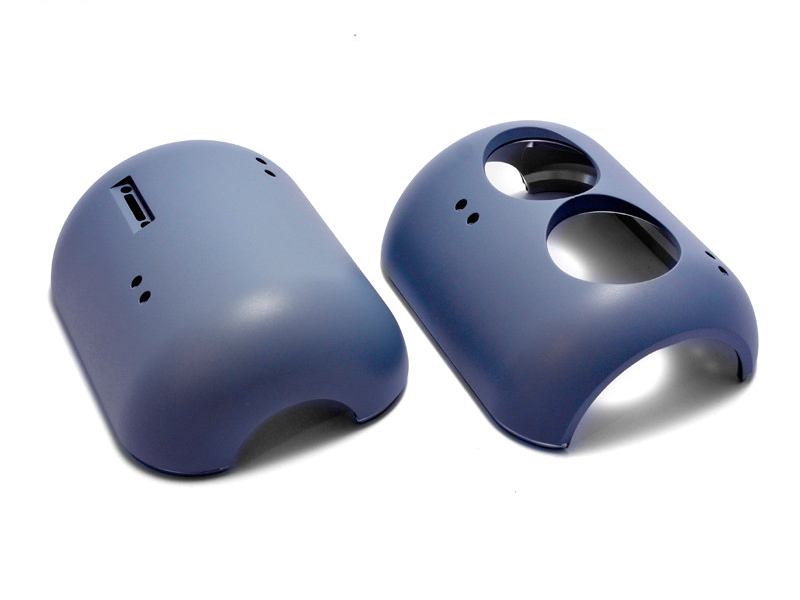Rapid Prototyping of Plastic Parts Using CNC Milling for Consumer Electronics
Introduction
Product development cycles in the rapidly evolving Consumer Electronics industry continue accelerating, driving demand for swift, accurate, and reliable prototyping methods. Plastic parts play a critical role due to their versatility, lightweight characteristics, and aesthetic adaptability, essential for device housings, internal mechanisms, and ergonomic features.
CNC milling services have emerged as a key technology for rapid prototyping of plastic components, offering unmatched precision, short lead times, and flexibility. By enabling rapid design iterations and precise functional evaluations, CNC milling significantly shortens the development timelines for innovative electronic products.
Plastic Materials
Material Performance Comparison
Plastic Material | Tensile Strength (MPa) | Flexural Modulus (GPa) | Heat Resistance (°C) | Typical Applications | Advantage |
|---|---|---|---|---|---|
40-50 | 2.1-2.4 | 80-95 | Electronic enclosures, prototypes | Excellent impact resistance, easy machinability | |
55-70 | 2.2-2.5 | 120-130 | Clear display panels, casing | High transparency, exceptional impact strength | |
60-70 | 2.5-3.0 | 90-110 | Gears, precision mechanisms | Superior dimensional stability, excellent wear resistance | |
70-85 | 1.8-3.4 | 120-160 | Internal moving parts, connectors | High mechanical strength, good thermal resistance |
Material Selection Strategy
The optimal choice of plastics for consumer electronics prototyping depends on the functional and aesthetic requirements:
General-purpose and impact-resistant prototypes: Select ABS for ease of machining and robustness.
Transparent or aesthetically critical components: Use Polycarbonate (PC) for its optical clarity and durability.
Components requiring precision and low friction: Choose POM (Acetal) due to excellent dimensional stability and wear properties.
Mechanical components with thermal considerations: Opt for nylon (PA), which offers high mechanical strength and heat resistance.
CNC Milling Processes
Process Performance Comparison
CNC Milling Technology | Dimensional Accuracy (mm) | Surface Roughness (Ra μm) | Complexity Level | Typical Applications | Key Advantages |
|---|---|---|---|---|---|
±0.02 | 1.6-3.2 | Medium | Basic housings, simple prototypes | Fast turnaround, cost-effective | |
±0.015 | 0.8-1.6 | High | Multi-sided casings, functional prototypes | Improved accuracy, reduces setups | |
±0.005 | 0.4-0.8 | Very High | Complex ergonomic parts, intricate details | Exceptional precision, minimal secondary finishing | |
±0.01 | 0.8-1.6 | Medium-High | Rapid prototype iterations, product development | Quick iterations, high repeatability |
Process Selection Strategy
Selecting the appropriate CNC milling method depends on prototype complexity and speed of iteration:
Early-stage, simple designs, and rapid turnarounds: Choose 3-axis CNC milling for efficiency and economy.
Components with detailed geometry and multiple features: Select 4-axis CNC milling for accuracy and reduced manual handling.
Highly intricate prototypes with strict dimensional tolerances: Utilize 5-axis CNC milling to ensure ultimate precision and fine surface finishes.
Fast-pace,d iterative prototyping cycles: Opt for specialized CNC Machining Prototyping to balance quality and speed effectively.
Surface Treatment
Surface Treatment Performance
Treatment Method | Aesthetic Improvement | Wear Resistance | Heat Stability (°C) | Typical Applications | Key Features |
|---|---|---|---|---|---|
Excellent (customizable colors) | Moderate | Up to 100 | External casings, visual prototypes | Versatile aesthetic options, cost-effective | |
Superior gloss and color retention | Moderate-High | Up to 120 | Display bezels, touch panels | High gloss, quick curing, scratch-resistant | |
High (mirror finishes possible) | Moderate | Up to 90 | Transparent covers, aesthetic parts | High clarity, smooth finish, visually appealing | |
Good (matte uniform finish) | Moderate | Up to 110 | Grip surfaces, housings | Uniform matte texture, enhanced tactile feel |
Surface Treatment Selection
Surface finishing strategies for plastic prototypes should be guided by the intended product application:
Visual models or consumer-facing parts: Select Painting or UV Coating to deliver high-quality aesthetics and consistent appearance.
Transparent or visually critical parts: Polishing ensures optical clarity and a premium look.
Functional prototypes with ergonomic needs: Apply Texturing (Sandblasting) to improve tactile characteristics and grip.
Quality Control
Quality Control Procedures
Precise dimensional verification using Coordinate Measuring Machines (CMM) and optical inspection tools.
Surface finish quality checks with profilometers to confirm Ra specifications.
Material testing (tensile strength and flexural modulus) per ASTM standards.
Thermal and environmental stability tests for functional validation.
Comprehensive visual inspection to ensure surface quality and defect-free prototypes.
Documented quality compliance according to ISO 9001 standards.
Industry Applications
Plastic Component Applications
Device housings and ergonomic covers for handheld electronics.
Internal precision gears and connectors in wearable devices.
Transparent casings and panels for smart displays and wearables.
Prototypes for quick user-experience validation in product design phases.
Related FAQs:
Why is CNC milling ideal for rapidly prototyping plastic parts in consumer electronics?
What plastic material is best suited for transparent consumer electronics parts?
How does CNC milling compare to 3D printing for consumer electronics prototypes?
Which surface treatment provides the best aesthetics for plastic prototypes?
What quality standards should plastic prototypes for electronics meet?

